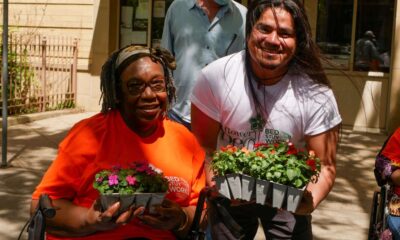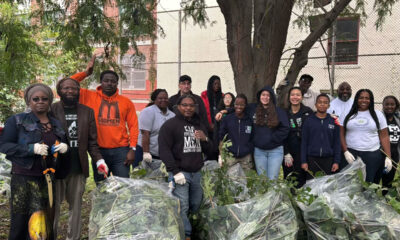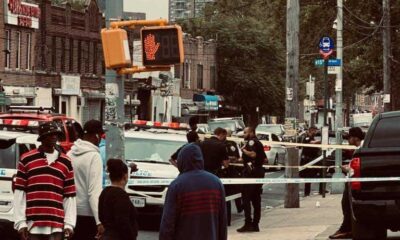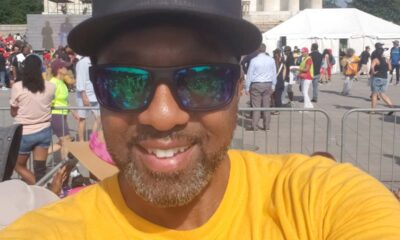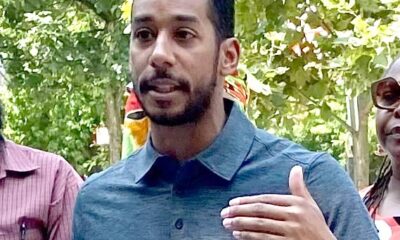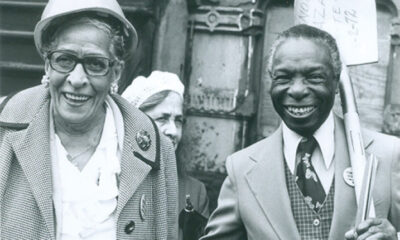Environment
A Call from Spain, A Blueprint for Action
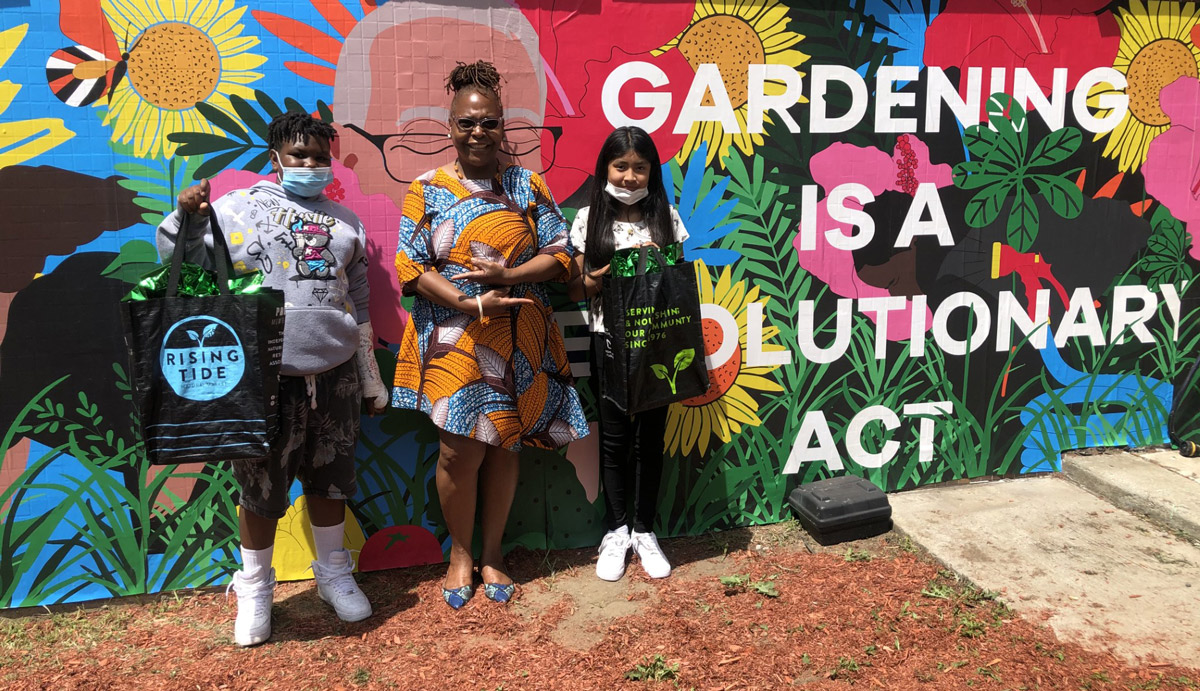
By Marlon Rice
For the entire month of April, we have been using this center section to highlight the triumphs, accomplishments and cohesiveness of the community in its work to apply environmental justice to Central Brooklyn.
From the partnership between the Magnolia Tree Earth Center and School District 16, to the work of Bridge Street Development with their Flower Bed Stuy program, we’ve touched on how regular people can be amazing catalysts for environmental change. And, even as we look to solve the environmental problems in our own enclaves, many of our problems are shared throughout neighborhoods and cities across the world.
Back in December, I received an email from Rosalie Le Grelle. Rosalie is a Creative Communications Fellow at the Human Impacts Institute. Their mission is to use arts and culture to inspire environmental action for social good.
Rosalie reached out to me because she was doing research on what inspires environmental justice action, what the impact of arts and culture have on this and if that impact can be measured.
The end goal for this research was to create useful tools like guidelines or toolkits to support environmental justice groups in better understanding and evaluating their impact in cities and neighborhoods where they work.
Rosalie asked if I’d be interested in being interviewed for the research. I looked the Institute up, and saw that they had a center in Williamsburg. Excited to connect to another environmental justice group in the community I accepted the offer.
We had a zoom call early on a Friday morning in December, and to my surprise Rosalie was actually doing her research from a place that wasn’t in the community at all.
She wasn’t even in America. Rosalie was reaching out from Barcelona, Spain!
We had an amazing conversation about the work of arts, culture and media in promoting environmental justice.
Rosalie had done her research on Brooklyn, and knew all too well the issues that this neighborhood faces. The conversation went well past the hour allotted. There was a real concern in Rosalie’s disposition, an authentic desire to help.
Roslaie’s research was centered around exploring how innovative and creative community-based methods can drive environmental justice action, and what the role of arts and culture can be to support this.
For the research, Rosalie first reviewed more than 150 articles, writing a summary of each article for cataloging purposes. Next, she reached out to a bunch of environmental justice groups in New York City, focusing on Brooklyn, in order to speak with the people who are on the ground doing the work. The goal of the conversations was to understand if there were any differences in what she had read compared to the expertise of the groups doing the work. And, if the research out there was in fact useful to on-the ground struggles, and if not, what could be done to bridge those gaps.
Rosalie also understood the limits she faced in her research.
The first limit being positionality. Rosalie is a white, European middle class woman. As such, her ability to understand the lived experiences of the Black community and to conduct environmental justice research as someone who has never been faced with experiences such as environmental racism before is a limit to the clarity of the research.
In her words, “I have never lived in an environmentally burdened area that limits my basic livelihood. Moreover, I am also limited in my ability to understand cultural references and nuances, even more as the interviews were done online.”
The second limit to her work is a limit that many of us are used to facing – Resources and Funding.
For this project, both were limited. Rosalie was the only person conducting this research, and she was doing it part-time from a location 3,287 miles away.
Her interview and literature review centered around three main questions. 1) What is driving environmental justice action? 2) What is the impact of arts and culture in driving environmental justice action? And, 3) How do we measure the impact of arts and culture?
In our communities, the driving forces behind environmental justice action are rooted in both beliefs and strategies. We look at our work in environmental justice as advocating for a holistic perspective and multi-level approach to driving change. Rosalie found that in her interviews participants stressed the significance of a shared vision for change, partnerships, and mutually reinforcing activities.
This again reinforces that our beliefs in environmental justice are rooted in our cultural belief system. However, participants were also clear that policy change on the local, state and federal levels would be a crucial driver for systemic change.
Culturally, we announce our belief systems and create calls for action using the arts. The arts and the work of educating and informing our communities go hand in hand. In her interviews, Rosalie found that we look to create spaces with common environmental justice values and norms for discussions and relations to foster community-building.
She also found an emphasis on culture preservation: protecting cultural heritage and diversity as a way to resist gentrification. This is a very nuanced and interesting association. Culture is environment. If you shift culture, you shift the environment in that community.
Overall, arts and culture have an undeniable importance for environmental justice action as it reaches emotions, which is crucial for behavioral change, and it brings people together, which is crucial for personal connections.
Art, though, doesn’t create change overnight. In her report, Rosalie states, “if we want to understand the influence of arts and culture, it is best to do assessments over the long term.
Given that arts and culture have an impact on shaping perspectives, values, and worldviews, it’s important to recognize that these changes unfold gradually. Therefore, short-term evaluations may not adequately capture the full extent of their effects.”
Submitted below, Rosalie’s conclusions drawn from both the interviews that she conducted with myself and other residents involved in environmental justice in New York City, in her own words.
- Under-funded and under-staffed
It is very clear from our conversations that environmental justice groups are under-staffed and under-funded.
This, of course, should not come as a surprise for you. But it is important to underline here as a crucial point so that organizations such as the Human Impacts Institute keep this in mind at all times: when drafting projects, when piloting and implementing them, recognizing the structural violence environmental justice groups face and how that results in a lack of resources. The low rate of responses to the survey underlines this as well. - Change through culture building
In most of the conversations I have had, participants highlighted that driving change involves building culture and creating new social structures, norms, behaviors, and values—essentially, shaping cultures.
As discussed earlier, several barriers to driving action have been identified, including gentrification, retention issues, emotional invalidation, and more. Some of us have explored strategies in our discussions to overcome these limitations.
What emerged from this, is the necessity for a cohesive and distinct message, a form of clear ‘branding’ for environmental justice. Strong enough to unite various stakeholders and revolutionary enough to challenge existing paradigms.
From our conversations I understand environmental justice groups have a wide variety of messaging and communication techniques. Taking this into account with the rest of the research, there seems to be a need for streamlined approaches and frameworks. However, as mentioned in point 1., your limited capacity presents challenges in dedicating time and resources to this. - Arts as a significant opportunity for strategy
Most conversations highlighted the fact that arts and culture are perceived as valuable tools for driving environmental justice action. Most of your organizations’ work focuses mostly on culture building and does not incorporate the arts as a strategy to do so.
The other organizations which do not regularly use arts & culture do however believe this aligns with their mission/theory of change to some extent.
Again, time and money is a barrier here. Thus, a conclusion is that it would be beneficial to make connections with artists as well as provide expertise to develop impactful arts and culture projects. - Amplification through ‘social amplifiers’
Something interesting found in the literature, and which was also supported by your expertise, is that using mass media for climate change communication is not as effective as we might think. Instead, having personal conversations one-on-one is much better at making people really change their behaviors.
This, along with how important social norms are in communities, made me rethink what really motivates people to take action for environmental justice. It seems that while big media platforms reach a lot of people, they might not be as good at making a real change in people as talking deeply with specific individuals about environmental issues.
When referring to “specific individuals” in this context, I mean people who hold significance in their communities, have influence on social norms, or align with what we can describe as social amplifiers. It is interesting to talk about John Paul Lederach’s idea in relation to this. He talks about something called “critical yeast,” which is a small part of a community that can actually have a big impact on everyone else.
It means that even if only a few people in a group are influential, they can help change how everyone in the group behaves. This suggests that focusing on those influential people, even if they are just a few, can really help make a big difference in getting more people engaged.
This means that by working with the right people who can change what’s seen as normal, we can make a much bigger impact on environmental justice efforts. - Experiential understanding
Another thing we learned from your expertise is that the people most involved in environmental justice are those who have experienced it firsthand and those who feel deeply connected to their community and environment.
As we mentioned earlier, research shows that emotions like anger, fear, hope, and worry are key factors in changing behaviors. One powerful way to create change is by making environmental issues personal to people. This means it’s really important for people to have real-life experiences with environmental justice—to learn by doing, feeling, and living it. - Limited ability and interest in updating measuring techniques
There’s a tendency to narrow the scope of measurement to meet the most important stakeholder needs, although there’s recognition of the value in sharing impacts and measurements with communities to foster engagement.
It’s been noted that telling stories and sharing personal experiences, especially in one-on-one conversations, is really effective. But there are big challenges when it comes to measuring the outcomes.
However, significant barriers exist concerning outcomes measurement, including issues such as diffuse reciprocity, where impacts are too widespread to be readily visible, and measurement mismatch, where existing methods fail to capture the full scope of impacts, alongside gaps in necessary expertise.
Rosalie’s conclusions draw up a detailed strategy for every environmental justice organization in Central Brooklyn to use in heightening environmental awareness. Not just for Earth Month, but for every month, and every day.


